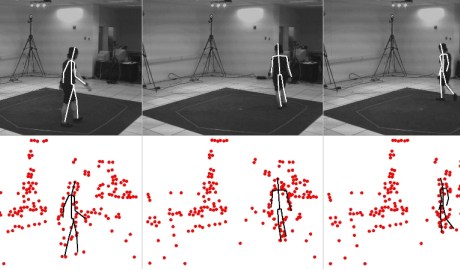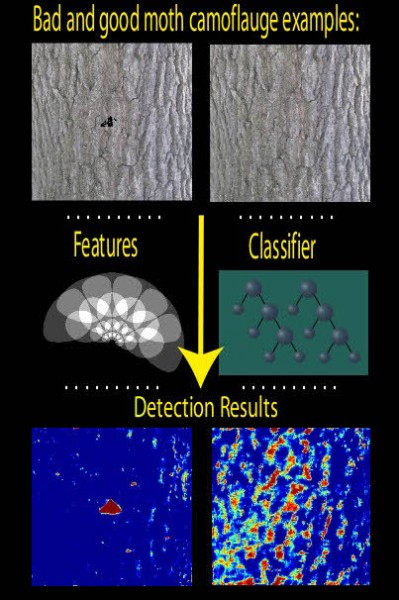A novel close-to-sensor computational camera has been designed and developed at the ViLab. ROIs can be captured and processed at 1000fps; the concurrent processing enables low latency sensor control and flexible image processing. With 9DoF motion sensing, the low, size, weight and power form-factor makes it ideally suited for robotics and UAV applications. The modular design allows multiple configurations and output options, easing development of embedded applications. General purpose output can directly interface with external devices such as servos and motors while ethernet offers a conventional image output capability. A binocular system can be configured with self-driven pan/tilt positioning, as an autonomous verging system or as a standard stereo pair. More information can be found here xcamflyer.
Tag: D.Gibson
Human pose estimation using motion
Ben Daubney, David Gibson, Neill Campbell
Currently we are researching how to extract human pose from a sparse set of moving features. This work is inspired from psychophisical experiments using the Moving Light Display (MLD), where it has been shown that a small set of moving points attached to the key joints of a person could convey a wealth of information to an observer about the person being viewed, such as their mood or gender. Unlike the typical MLD’s used in the physchophysics community ours are automatically generated by applying a standard feature tracker to a sequence of images.
Moving Light Display (MLD), where it has been shown that a small set of moving points attached to the key joints of a person could convey a wealth of information to an observer about the person being viewed, such as their mood or gender. Unlike the typical MLD’s used in the physchophysics community ours are automatically generated by applying a standard feature tracker to a sequence of images.
The result is a set of features that are far more noisy and unreliable than those tradtionally used. The purpose of this research is to try to better understand how the temporal dimension of a sequence of images can be exploited at a much lower level than currently used to estimate pose.
Analysis of moth camouflage
A half million pound BBSRC collaboration with Biological sciences and experimental Psychology, the aim of this project is to develop a computational theory of animal camouflage, with models specific to the visual systems of birds and humans. Moths have been chosen for this study as they are a particularly good demonstrators of a wide range of cryptic and disruptive camouflage in nature. Using psychophysically plausible low-level image features, learning algorithms are used to determine the effectiveness of camouflage examples. The ability to generate and process large numbers of camouflage examples enables predictive computational models to be created and compared to the performance of human and bird subjects. Such comparisons will give insights into what aspects of moth camouflage are important for avoiding detection and recognition by birds and humans and thereby, give insight into the mechanisms being employed by bird and human visual systems

